Fill That Post Hole With Concrete!
When you’re building a deck, a fence, a pole building or whatever, everyone thinks that the hole MUST be filled with concrete. I did a little research and on this subject and surprisingly there are a couple websites where this question has been asked with varying answers. All make a case for their point of view, but for me, I’m going with the opinion of the science and math teacher that I grew up with and started this business almost fifty nine years ago now, Mack Porter, and he says, “Don’t fill your post holes with concrete”.
Here is the case he makes: All concrete will do two things, guaranteed; hold moisture and crack at some point. Both are bad things for the post that you are encasing in the concrete.
First, the moisture. How many of you have a basement with a concrete foundation that “feels” dry? It doesn’t have to leak or have water showing to have that moist feeling, but still it is. Why is that? Because concrete is rock, and all rocks have moisture in them and are porous. More importantly, rock will absorb and pass moisture through to its dryer side. 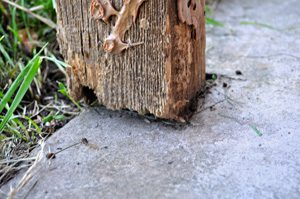 If you don’t believe me, try putting some water drops on what most would consider one of the hardest rocks, granite. If it has not been treated, it will soak up the water and you will notice a darker place on the granite.
If you don’t believe me, try putting some water drops on what most would consider one of the hardest rocks, granite. If it has not been treated, it will soak up the water and you will notice a darker place on the granite.
Second, the cracks. Everyone has some concrete poured somewhere around their house. Have you ever had a slab of flatwork, sidewalk or foundation that didn’t have a crack in it somewhere? No, it’s impossible. No matter how strong a mix or how much steel you put in it, it will crack somewhere. It has to.
So let’s apply this to your pour, unsuspecting post, pole, 4×4, or 6×6 that you are using. Moisture is woods natural enemy. Along with its accomplice, air, moisture will take down that piece of wood. Now I know you did the right thing and you bought treated wood for your post. That does help, and it will prolong the woods life, but no treating solution will stand up to a CONSTANT attack from air and moisture. That happens at the ground level. With concrete holding the moisture against the wood, wood has no chance and will eventually lose the battle. Now you don’t have to lose all hope because it’s for certain that the concrete around the post will crack, therefore making it easy to pull out when it starts to rot. Even worse, the concrete cracks early. Now the concrete is like a bucket around the post, filling up with water every time it rains. Now you’re heading for a rotten post in a sloppy hole. YIKES!
How did we get here? How did it become accepted practice in construction to fill postholes with concrete? Here’s what I think. Before packaged concrete came along, Sakrete and Quikrete being the two big names, we would recommend to customers to put a concrete block in the bottom of the hole to keep the post from settling or sinking. Then when Sakrete came out, we would recommend you pour some in the bottom of the hole to set the post on, replacing the block. Of course, being guys, more is always better right? So why don’t we just fill that hole up with concrete? Boy that’s got to be better doesn’t it? Solid as a rock! It’s not goin anywhere! Sound familiar?
So what do you do instead of concrete, gravel? A lot of people will throw rocks at this method (sorry) but using gravel does a couple of things. First, it lets the water drain away from the wood right on down into the ground. No water, no moisture, no rot! COOL! Gravel is also like a good defense in football. It bends, but never breaks. Have you ever seen some of these skyscrapers in California during an earthquake? They are dancing all over the place when the earthquake happens, but rarely do they break. Even better, watch the wings of a jumbo jet at takeoff. You would swear they were going to flap like a bird during takeoff. Again, bend but not break.
So remember, if you want concrete mix and Quikrete is what we carry, we’ve got it for sale and we’ll be glad to load it into you truck for you, but ask the guys at the service counter for some gravel, and when I say gravel I mean limestone chips of any size, not pea gravel. We should have it too and I think you’ll be happier in the long run.
Kent Porter
Porters Building Centers

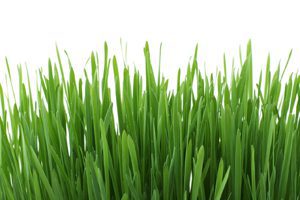

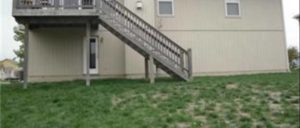
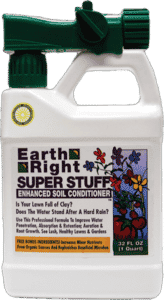

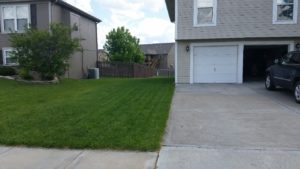
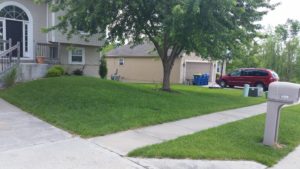
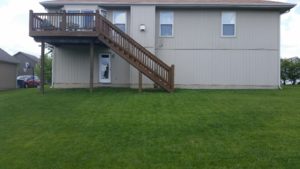


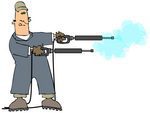 who knows how many pounds per square inch of water. Most every manufacturer will tell you DO NOT power wash a composite deck. Instead, use a deck cleaner. I have personally used the Olympic Deck Wash with good success on my deck. You do have to give it a scrub or two but really, it’s not that bad. It should get rid of the black spots, which are mold, for around a year. We have a new product in stock at Porters that I want to try. It’s called Bravo from Encore Coatings. It’s supposed to seal composites and make them less susceptible to mold stains while restoring the deck to its original color and luster.
who knows how many pounds per square inch of water. Most every manufacturer will tell you DO NOT power wash a composite deck. Instead, use a deck cleaner. I have personally used the Olympic Deck Wash with good success on my deck. You do have to give it a scrub or two but really, it’s not that bad. It should get rid of the black spots, which are mold, for around a year. We have a new product in stock at Porters that I want to try. It’s called Bravo from Encore Coatings. It’s supposed to seal composites and make them less susceptible to mold stains while restoring the deck to its original color and luster.